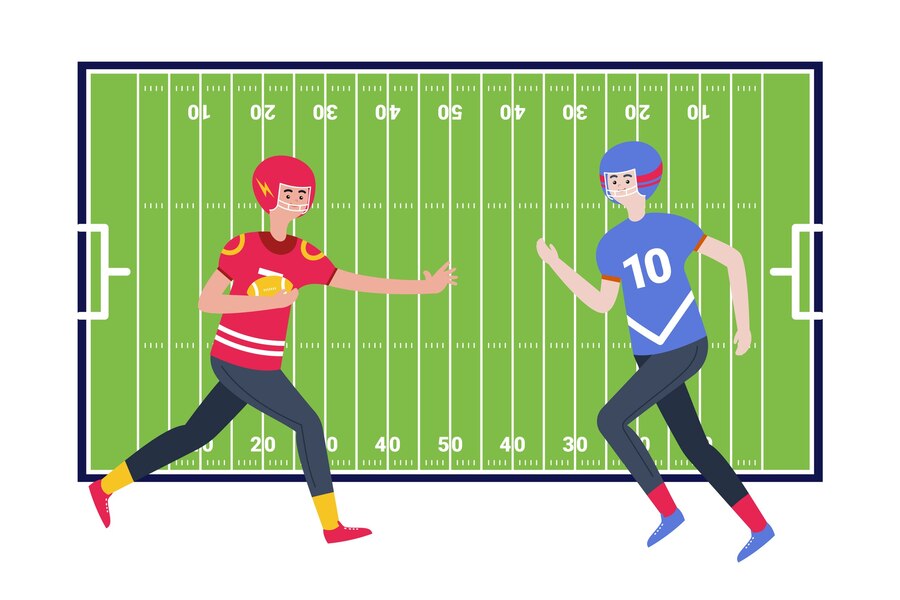When it comes to the thrilling world of football, few moments are as exciting and nail-biting as the post touchdown attempt. Whether it’s a one-point kick or a two-point conversion, these attempts can make or break a game. But what exactly is a post touchdown attempt, and why is it so important? Let’s dive into the fascinating details of this crucial aspect of football.
History of Post Touchdown Attempts
The concept of the post touchdown attempt has evolved significantly since the early days of football. Originally, there was no formal system for scoring after a touchdown. As the game grew in popularity and sophistication, rules were introduced to add an extra layer of strategy and excitement.
The Basic Rules
A post touchdown attempt occurs immediately after a team scores a touchdown. They have the option to kick the ball through the goalposts for one extra point or to run a play from the two-yard line to score two points. Each option has its own set of rules and requirements, making the decision a critical part of the game strategy.
The Role of Different Players
Different players have distinct roles during a post touchdown attempt. The kicker and the holder are crucial for the one-point kick, while the quarterback and the offensive line play pivotal roles in a two-point conversion. Coordination and precision are key to a successful attempt.
One-Point Conversion
The one-point conversion, also known as the extra point, involves kicking the ball through the goalposts from the 15-yard line. This is considered a safer and more straightforward option, with a high success rate.
Two-Point Conversion
The two-point conversion is a riskier but potentially more rewarding option. The team runs a play from the two-yard line with the goal of crossing the goal line again. This play requires more strategic planning and can dramatically alter the outcome of a game.
When to Opt for One-Point Conversion
Teams typically choose the one-point conversion when they want to play it safe and ensure an additional point. This option is often used when the team has a comfortable lead or when the game is early, and there’s less pressure to take risks.
When to Opt for Two-Point Conversion
The two-point conversion is often chosen in high-stakes situations. If a team needs to close a scoring gap quickly or if a single point won’t make a significant difference, they might opt for this more aggressive strategy.
Historical Data
Historically, one-point conversions have a success rate of about 94%, while two-point conversions hover around 48%. These statistics highlight the inherent risk and reward associated with each option.
Factors Influencing Success
Several factors can influence the success of a post touchdown attempt, including weather conditions, player fatigue, and the opposing team’s defensive strategies. Coaches must weigh these variables when making their decision.
Iconic One-Point Conversions
One memorable one-point conversion occurred during Super Bowl XXV, where the New York Giants’ kicker Scott Norwood missed a crucial kick, costing his team the championship. This moment underscores the pressure and significance of even a seemingly simple extra point.
Memorable Two-Point Conversions
In contrast, the “Philly Special” during Super Bowl LII is one of the most famous two-point conversions. The Philadelphia Eagles executed a trick play that led to a successful two-point conversion, helping them secure their first Super Bowl win.
Physical Training
Athletes undergo rigorous physical training to prepare for post touchdown attempts. This includes strength training, agility drills, and specialized exercises to enhance their kicking or passing abilities.
Mental Preparation
Mental preparation is equally important. Players practice under simulated pressure situations to develop the focus and composure needed during critical moments in a game.
Player Errors
Common player errors during post touchdown attempts include mishandling the snap, poor timing, and lack of coordination. These mistakes can be minimized through repetitive practice and drills.
Strategic Missteps
Strategic missteps often occur when coaches fail to consider all variables, such as weather conditions or the opposing team’s strengths. Thorough analysis and flexible game plans can help avoid these pitfalls.
Use of Analytics
The use of analytics has revolutionized post touchdown attempts. Teams now analyze vast amounts of data to determine the optimal strategy for each situation, increasing their chances of success.
Innovations in Training
Technological advancements have also improved training methods. Virtual reality simulations and advanced biomechanics are used to refine players’ techniques and decision-making skills.
NFL
In the NFL, post touchdown attempts are highly strategic, with teams frequently analyzing their opponents’ tendencies to make informed decisions.
College Football
College football sees a more diverse range of strategies due to the varying skill levels and coaching philosophies. This makes post touchdown attempts particularly unpredictable and exciting.
Other Leagues Worldwide
Internationally, different leagues have their own rules and styles, adding a unique flavor to post touchdown attempts. Understanding these variations can provide deeper insights into the global game of football.
NFL vs. College Rules
One significant difference between NFL and college rules is the starting point for the two-point conversion. In college football, the attempt begins at the three-yard line, slightly increasing the difficulty compared to the NFL’s two-yard line start.
International Differences
International leagues, such as those in Canada and Europe, have their own rule variations, which can influence how post touchdown attempts are executed and strategized.
Influential Coaches
Coaches like Bill Belichick and Nick Saban are renowned for their strategic acumen in post touchdown attempts. Their innovative approaches have often set new trends in the sport.
Case Studies
Analyzing case studies of famous games can provide valuable insights into the strategies employed by successful coaches, illustrating the importance of adaptability and foresight.
Potential Rule Changes
As football continues to evolve, potential rule changes could impact post touchdown attempts. Discussions around increasing the difficulty of extra points or altering the scoring system are ongoing.
Evolution of Strategies

The future will likely see even more sophisticated strategies, driven by advancements in analytics and a deeper understanding of game dynamics. Teams will continue to push the boundaries to gain a competitive edge.
Conclusion
Post touchdown attempts are a critical and thrilling aspect of football, blending skill, strategy, and split-second decision-making. Whether opting for a one-point kick or a two-point conversion, these plays can dramatically impact the outcome of a game. Understanding the nuances and history of post touchdown attempts not only enhances our appreciation of the sport but also showcases the ever-evolving nature of football.
FAQs
What is the difference between a one-point and a two-point conversion?
A one-point conversion involves kicking the ball through the goalposts for one extra point, while a two-point conversion requires running a play from the two-yard line to score two points.
Why do teams choose two-point conversions?
Teams opt for two-point conversions when they need to close a scoring gap quickly or when a single point won’t make a significant difference in the game’s outcome.
How successful are post touchdown attempts?
One-point conversions have a success rate of about 94%, while two-point conversions succeed around 48% of the time.
What factors influence the success of a post touchdown attempt?
Factors include weather conditions, player fatigue, and the opposing team’s defensive strategies.
Are there rule differences for post touchdown attempts in various football leagues?
Yes, rules vary between leagues. For example, college football attempts start at the three-yard line, while NFL attempts begin at the two-yard line.
